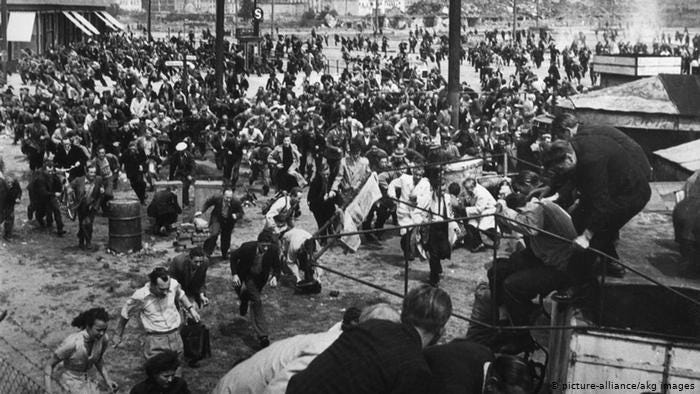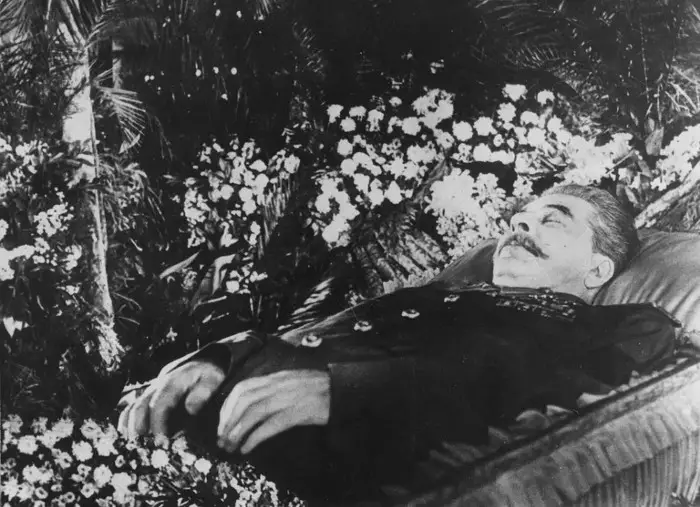 oesph Stalin’s death had been a major turn of events, not only for the USSR as a nation but also for the communist movement within East Europe. Even if many citizens of the USSR anticipated this moment they did not expect it so soon. What is even more interesting is that the population of Russia especially had mixed feelings about Stalin’s death and what this would have meant from all points of view.
oesph Stalin’s death had been a major turn of events, not only for the USSR as a nation but also for the communist movement within East Europe. Even if many citizens of the USSR anticipated this moment they did not expect it so soon. What is even more interesting is that the population of Russia especially had mixed feelings about Stalin’s death and what this would have meant from all points of view.
Joseph Stalin’s death
On March 1, 1953, after a bitter drunken eve, Stalin is found by a personal guard lying on the floor in his living room at the villa in Kunzevo, a suburb of Moscow. Three days later, the first information about the illness of the “beloved leader” was released, and it was announced that he had died on March 6th. Most of the people around him could not believe that he had just vanished, a man of his caliber killed by an illness out of nowhere.
The hysteria about the heavy loss suffered by the Soviet people and the progressive part of the world triggered by Soviet propaganda at Stalin’s death was not supported by the Bessarabians. The files recently discovered in the SIS archive show that there were multiple revolts documented by the NKVD, between 4 and 6 March. Many of these participants that felt Stalinism on their own skin were not afraid to express their satisfaction with Stalin’s death.
A good percentage of the population had mixed feelings, yes they were happy that Stalin’s tyranny will come to an end but they were wondering if it really will. Some of them thought that due to Stalin’s death, the Government will act in a negative manner by taking the goods from the citizens or even worst, becoming more strict in order to honor the fallen leader. The Government was also in shock and did not know exactly how to act, they were always led by their leader and hadn’t thought for even a second that he would die at that age.
A revolted population
The population of the USSR was in the wrong big time, they thought that Stalin’s death means the destalinization of not only Russia but the whole of the USSR which was very wrong. For the first two years after Stalin’s death, the Russian Government became more strict, but not in order to praise Stalin but to make sure that a major revolution that could put the end to Stalinism and Communism would not start.

After the 6th of March 1953, many small-scale riots and protests have taken place in Russia as well as other countries that were part of the USSR. The Revolution even spread to East Berlin. On June 17th, thousands of people gathered in East Berlin to protest against the Soviet Union-backed government’s plan to increase taxes, prices, and work quotas in the accelerated process of the Sovietization of East Berlin.
The belief in the destalinization of the USSR was disappearing day by day, if only they knew the many years of communism to come. In all fairness after the two-year period of riots and protests along Eastern Europe (including East Germany), things have calmed down, and slowly but steadily the life quality for the inhabitants of the USSR had improved from the old days of Stalinism before the Second World War.
End of Stalinism
The population of the Soviet Union even if they were happy with Stalin’s death they were also sad as their leader had to lead them through a vicious World War and had helped Russia grow more than ever. But all of this came at a cost, at a cost that they deserved as the population chose Stalin as the leader of the Soviet Union.
Stalinism did end around 1958, however, its core principles were still there and would even be implemented in the KGB (Soviet Secret Service). Stalinism is what killed millions of innocent citizens through the Great Purge between 1936 and 1938. Stalinism is what got the population of the USSR into poverty. However, Stalinism arguably contributed to the victory of World War II.
Avid Writer with invaluable knowledge of Humanity!
Upcoming historian with over 30 million views online.
“You make your own life.”





